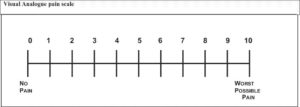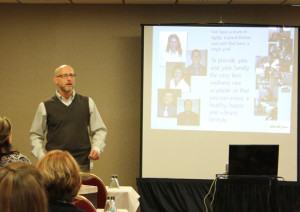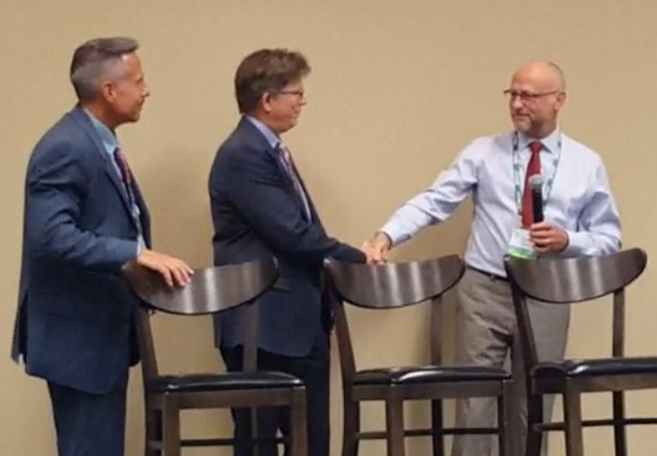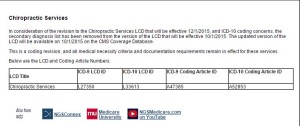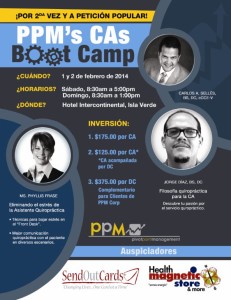Four steps to continuously develop and improve your practice
The Practice Development Process is a simple, yet powerful practice building system that can help take you and your business to its full potential of a systematized, team driven and profitable business.

It transforms your practice. Month by month, it helps move your practice to a more profitable service oriented business that runs at near full capacity – with less ups and downs that demand your time and extra work.
It is based upon the idea of constant improvement.
The principle of constant improvement in management science has been a major factor in the success of large manufacturing corporations around the world. The success of the Japanese automobile manufacturing rests heavily on a process of constant improvement called Kaizen (kai = change, zen = good). Motorola developed its own program called “Six Sigma”, a process of continuous improvement.

We have adapted these processes to be applied in practice management and call it the 3Goals Practice Development Process (PDP).
The Practice Development Process has four steps:
- Access
- Plan
- Supervise
- Document
Integrate This Process As Part Of Your Team Meetings. The first two steps, Assess and Plan, are usually done before or during the first staff meeting of the month. Supervision goes on during the month to ensure that the plan gets completed. At the end of the month, successful procedures are documented in a practice playbook for future training and assessments.
Your Consultant and Coach. This process is best done with your practice and business coach. Each month, the two of you should work through step 1 and 2. During the month, your coach may also be able to help with the implementation of the plan.
THE 4 STEPS OF THE PRACTICE DEVELOPMENT PROCESS:
1. Assess and Review. At the end of the month, look over the statistics and note what areas improved and what areas didn’t. Then check what was actually done, or not done in each area. Use your departmental checklists from your Practice Playbook if you have started this.
Many business owners still manage without looking at objective indicators. They manage by emotions, mistakes, fear, “bright ideas”and other flighty factors that ultimately hold a clinic back, or often just burn it out.
Effective clinic managers, like an athletic team coaches, base their actions first on actual outcomes and performance monitors. These are your daily, weekly, and monthly practice statistics. PM&A has developed a specialized form of review which is called Practice Analytics System which we display on our client’s personal Practice Dashboard’s.
This assessment also includes reviewing checklists of the key procedures and whether or not key duties were done.
2 Plan. Work out the key areas you want to work on in the next month. Pick just one or two areas that will make the biggest difference and make a list of a few action steps that will help improve the area in your office you have targeted. Get the actions assigned with a date on when they should be done.
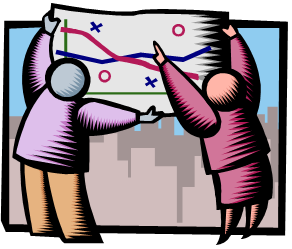
3 Supervise. Regularly monitor the implementation of the action steps with yourself, your team, and your consultant. Provide help where needed to get them done.
4 Systematize. You do not want to keep inventing the wheel, so at the end of each month, document any procedure that worked well.
List all successful activities for each department and “lock them in” as standard operating procedures. Keep what works, throw out what doesn’t. Start with just a checklist of key procedures. Later, you can write or videotape a description of each procedure. It is from this that you will do your training and “coaching reviews.” Use your playbook often: refer to it and practice.

Gradually, you should have your own system of practice management and patient management and have it outlined simply in your Practice Playbook. For example, the “Smith Chiropractic System of Patient Management.”
IMPLEMENTATION SCHEDULE
Week 1. First Week of the Month: Do Steps 1 & 2 – Assess and Plan
Week 2. Supervise. Coordinate upcoming activities. Study and Train. (Optional: Separate Marketing Meeting)
Week 3. Supervise. Coordinate upcoming activities. Study and Train.
Week 4. Supervise. Coordinate on upcoming activities. Celebrate and party for a great month! Add to Practice Playbook.
REPETITION
Do The Practice Development Process Every Month.
The success of this process derives much of its power from a simple principle from Aristotle.

“We are what we repeatedly do.
Excellence, then, is not an act, but a habit.”
This often referenced quote is from a series of lectures he was to have given at the Greek Lyceum on ethics (300 B.C.). We could say, then, that continuing to do the Practice Development Assessment, and all of your procedures and systems, is ethical and leads to excellence. The contrary would also be true.
GOALS AND CONSTANT IMPROVEMENT
It is important to keep in mind WHY we are doing the PDP each month.
It is assumed we all want to improve, that improvement is possible, and that we have higher purposes and goals. Our patients do. That is why they see us and we help them improve and get closer to their goals at each visit.
By consistently working the 3 Goals Practice Development Process each month you, the practice, and each team member will also get closer to the higher goals each of you share.



